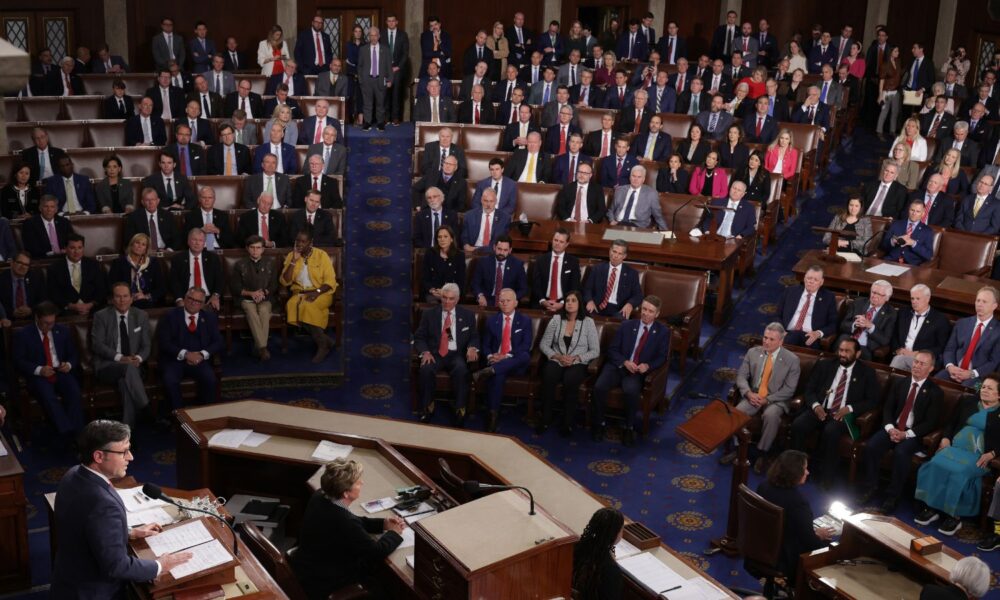We are seeing a lot of federal agency rules being finalized under the Biden administration regarding climate, clean energy, public health, and transportation. Rules based on science are important to ensure agencies are working to protect our environment and promote human health. However, once a rule is finalized, there is a congressional tool called the Congressional Review Act (CRA) that allows Congress to override the rule. The CRA provides specific shortcuts that can reverse a rule and make it difficult for agencies to issue new protections, even if the rule is based on science and critical to the protection of public health and the environment. This post provides an overview of how the CRA can affect those rules that protect our environment and health.
What is the Congressional Review Act (CRA)?
The CRA requires federal agencies to report on the issuance of rules (regulations and guidance documents) to both chambers of Congress (the U.S. Senate and the U.S. House of Representatives) and the Government Accountability Office (GAO), which has been referred to as the “congressional watchdog.” GAO acts as a non-partisan agency for Congress and provides fact-based information on how taxpayer dollars are spent, with the aim of improving performance in the federal government.
There is no specified timeline of when these rules need to be reported. Agencies typically submit rules when they are published.
How does the CRA work?
Congress can overturn agency rules through a joint resolution of disapproval. Both houses of Congress would need to agree on the joint resolution of disapproval. If the resolution is passed, it would need to be signed by the President.
Once an agency submits a rule to Congress, a joint resolution aiming to overturn the rule would need to be introduced within 60 days. The Senate has two provisions that can expedite the consideration of a CRA if certain criteria are met, whereas the House does not. If the Senate Committee has not reported on the resolution within 20 calendar days, 30 Senators may sign a petition to advance the resolution out of the Senate Committee to be placed on the Senate Legislative Calendar for a vote. Importantly, once the resolution is eligible for floor consideration, any Senator may call it up, meaning Senate leadership cannot block consideration. The CRA does not allow for amendments, motions to postpone, or motions to proceed with other business in the Senate regarding resolutions of disapproval.
In addition, the debate on the resolution is limited, and the Senate must move to vote upon completion of the debate. The Senate can use these fast-track procedures on a disapproving resolution but must act during the 60-day period of introduction and vote on the resolution.
The president has the option to use their presidential veto power, but Congress can still vote to override the veto with a two-thirds majority in both chambers, ensuring the agency rule cannot go into effect or continue.
If a resolution of disapproval is enacted, the CRA prevents the agency from issuing another regulation “substantially the same” to the previous one, unless Congress specifically authorizes the agency to do so through legislation. I’ll explore this particularly concerning aspect of the CRA further below.
Lastly, the CRA provides a “lookback” period for any final rules that are published during the timeframe when one Congress is ending, through the next Congress beginning. If an agency submits a rule during a 60-day period before the end of a Congress, the CRA allows for the rule to get a full 60-day review that can be split between two sessions of Congress. This can be important in a situation where the White House changes political hands during this window. For example, if President Biden finalized a rule now and a new administration took office next year, Republican majorities in the next Congress could pass a resolution to overturn it, and the next administration would sign it.
How does the CRA define rules?
The CRA has a broad definition of rule, adopted from the Administrative Procedure Act (APA). Under the APA definition (5 U.S.C. §551), rule is “the whole or a part of an agency statement of general or particular applicability and future effect designed to implement, interpret, or prescribe law or policy.”
The CRA excludes certain types of actions such as rules pertaining to agency management or personnel, or procedures or practices that do not affect the rights of obligations of non-agency parties. The CRA can be applied to final and interim final rules, including major and non-major rules. It cannot be applied to presidential actions or to non-rule agency actions such as orders.
When and often can Congress use the CRA?
The CRA was enacted in 1996, but the first CRA that passed and was signed into law happened in the 107th Congress (2001-2002) regarding the Department of Labor’s Occupational Safety and Health ergonomic rule. During the last administration, there were 16 CRAs that passed the 115th Congress (2017-2018). And for the current Biden Administration, there have been three passed in the 117th Congress (2021-2022) that were signed into law.
As of February 12, 2024, the CRA has been used 59 times (31 introductions in the House and 28 introductions in the Senate) during the 118th Congress (2023-2024). Of those 59 resolutions of disapproval, Congress has passed 9. President Biden has vetoed all of them.
What happens to a rule if the CRA is enacted?
If an agency rule is in effect when a CRA joint resolution of disapproval is enacted, the rule immediately goes out of effect and treated as if it had never been implemented. If a rule is not in effect when the joint resolution is enacted, it will continue to not take effect.
In addition, the agency is prohibited from issuing another regulation that is “substantially the same,” unless Congress authorizes the agency to do so though subsequent legislation. Because the courts have never determined how different a new regulation must be so that it is not “substantially the same,” the scope of this prohibition remains unclear and untested. This can cause a chilling effect on agencies that would want to reissue or take another step in protecting the public and the environment—such as the Department of Labor not reexamining ergonomic rules since the CRA repealed them over twenty years ago.
The CRA does not allow for judicial review from the courts.
How the CRA could impact you?
If the CRA is used to nullify rules UCS has been fighting for to ensure a healthy and just future, this would negatively impact the climate—and people. Rolling back rules aimed at reducing heat-trapping emissions and health-harming pollution from power plants and from vehicles, for example, would mean a slower trajectory for the transition to clean technologies, putting us at risk of missing our climate goals and failing to avoid the worst impacts of climate change. The air pollution that would continue to persist without these rules in place could negatively affect people’s health, especially in environmental justice communities that experience disproportionate burdens from pollution. Consumers would not experience the economic benefits that could be realized from rules that could help save them money, such as vehicle emissions rules. Overturning rules that improve access to information and transparency—such as those that strengthen risk management plan requirements for facilities that handle toxic chemicals, or require large public companies to disclose risks potentially facing shareholders due to climate impacts—could leave the public without vital information that affects our health, well-being, and financial stability.
Fortunately, we’ve seen some recent rules facing congressional disapproval remain in effect due to President Biden’s veto. More congressional attempts, such as the new CRA filed in both chambers regarding the Environmental Protection Agency’s particulate matter National Ambient Air Quality Standard (NAAQS)/Soot Rule, are expected.
UCS will be watching and doing what we can to prevent efforts that undermine climate and public health from succeeding.

